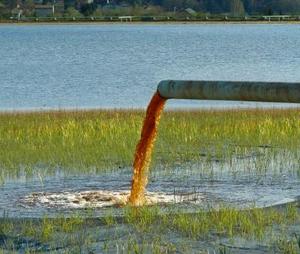WaterChemical pollution of European waters is worse than anticipated
Until now environmental authorities and parts of the scientific community have considered toxic chemicals to be rather a local problem affecting only a few bodies of water. A new study, however, reveals for the first time on a large scale the ecological risks emanating from chemical toxicants for several thousands of European aquatic systems. Chemical toxicity represents an ecological threat to almost half of all European bodies of water, and in approximately 15 percent of cases, the biota in freshwater systems may even be subject to acute mortality.

Europe's chemical pollution of waterways worse than thought // Source: ucsc.edu
Substantial improvements in freshwater quality by 2015 have been a declared objective of the EU member states, manifesting itself by the requirements of the Water Framework Directive (WFD). A recent study conducted by the Institute for Environmental Sciences Landau together with the Helmholtz Center for Environmental Research (UFZ) and fellow scientists from France (University of Lorraine and EDF) and Switzerland (Swiss Federal Institute of Aquatic Science and Technology - EAWAG) shows that this target is unlikely to be met due to the high levels of toxicants in the water bodies. One of the reasons: current measures for the improvement of water quality do not account for the effects of toxic chemicals. The study demonstrates for the first time on a pan-European scale that the ecological risks posed by toxic chemicals are considerably greater than has generally been assumed.
A UFZ release reports that up to now environmental authorities and parts of the scientific community have considered toxic chemicals to be rather a local problem affecting only a few bodies of water. The current study, however, reveals for the first time on a large scale the ecological risks emanating from chemical toxicants for several thousands of European aquatic systems. Chemical toxicity represents an ecological threat to almost half of all European bodies of water, and in approximately 15 percent of cases, the biota in freshwater systems may even be subject to acute mortality.
Actual state of European aquatic ecosystems is presumably even worse
Together with their French and Swiss fellow researchers the scientists from Landau and Leipzig have investigated risk thresholds being exceeded in the river basin of major stream networks, such as the Danube and the Rhine River at a pan-European level. For the first time, the extent to which risk thresholds were exceeded for three groups of organisms, namely fish, invertebrates and algae / primary producers, was estimated for these major river basins. The data used originated from official water monitoring activities of recent years. The scope of sampling consequently varied significantly in terms of spatial coverage, as well as timing, therefore, direct comparison(s) between different countries proves rather difficult. For example, the study finds, that water quality is worst in France, presumably due to the fact that authorities in this country installed a dense monitoring network and analyzed water samples for a multitude of substances, including the ecotoxicological relevant compounds. In other countries, by contrast, risks may remain unrecognized due
